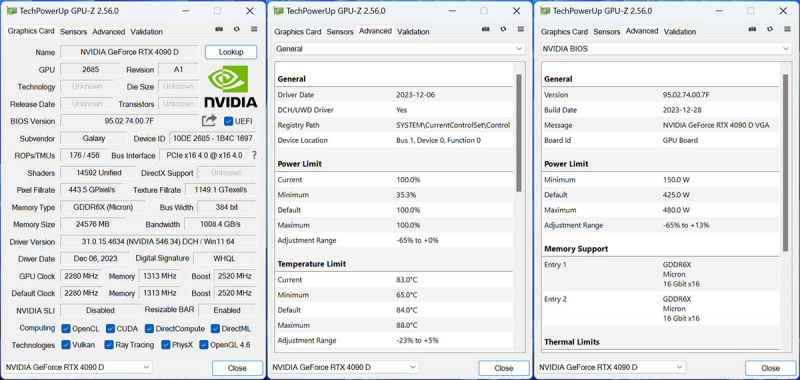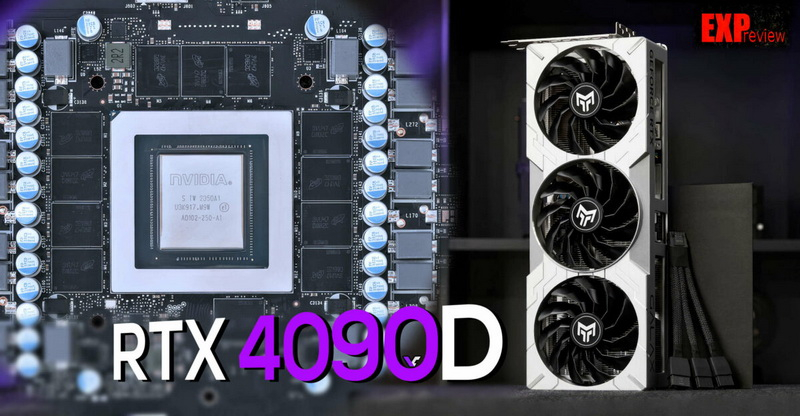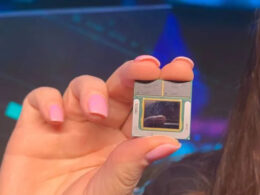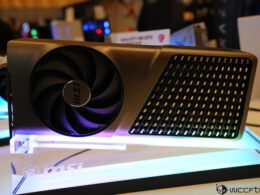Chinese media has recently published preliminary gaming and synthetic test results for the downsized flagship graphics card, the GeForce RTX 4090D. This version of the GeForce was released exclusively for the Chinese market. The first tests of the card were performed by Expreview, which laid hands on the Galax company’s sample RTX 4090D in a Metal Master version.
Note that the GeForce RTX 4090D is not subject to the US sanctions against high-performance graphics card deliveries to China. The Chinese can utilize them in creating their AI infrastructure.

At the core of the GeForce RTX 4090D lies the AD102-250-A1 graphic processor, containing 14,592 CUDA cores. This figure is 11% less than the standard GeForce RTX 4090, which contains 16,384 CUDA cores. The Chinese version also sees a reduction in tensor cores from 512 to 456, and RT-cores from 128 to 112. However, the GPU’s base frequency of the GeForce RTX 4090D model is 2% higher than its standard counterpart, at 2280 MHz compared to 2235 MHz. The GPU gaming frequency remains unchanged at 2520 MHz. The Chinese card lacks support for manual overclocking. The energy consumption of the Chinese model is 6% lower than the original RTX 4090, at 425W instead of 450W. The video memory volume and its parameters remain the same for the Chinese graphics card — the GeForce RTX 4090D offers the same 24GB GDDR6X memory.

Given the stated specifications, performance for the Chinese version of this flagship gaming accelerator was expected to be about 4 to 6% lower than the original RTX 4090. The first tests by Expreview confirmed this assumption.
Despite the reduced specifications, NVIDIA has priced the GeForce RTX 4090D at 12,999 yuan, honorably placing it at the same price as the original RTX 4090 at launch in China. The key market for the GeForce RTX 4090D distribution is China, but there are rumors it may also officially enter other countries like Vietnam over time. The new product will also definitely appear in Russia, but via parallel import.
The Galax GeForce RTX 4090D Metal Master version is equipped with a massive cooling system, consisting of three large fans. Expreview has compared this new model with the standard GeForce RTX 4090 in the NVIDIA reference version found in the Founders Edition.
According to the Chinese resource, the GeForce RTX 4090D’s performance is on average 5-6% lower than the standard RTX 4090, depending on the load. This is due to the reduced numbers for CUDA, tensor, and RT cores. Refer to Expreview’s review for a more detailed breakdown of the test results.
The overclocking potential of the GeForce RTX 4090D is of note. Erstwhile claims that the overclocking potential of the RTX 4090D had been blocked have been debunked as the card does not bear such a limitation. At least, not in the traditional sense. The review was able to raise the GPU frequency of the RTX 4090D model, albeit by only 200MHz. Whether under-voltage (reducing the working voltage for the GPU) is possible was not reported by the Chinese publication, yet raising the frequency of the GPU resulted in a performance improvement of 2.3% for the RTX 4090D in synthetic tests.
It is conceivable that NVIDIA’s partners releasing the RTX 4090D should resolve the overclocking issue closer to the sales launch of this graphics card, expected to arrive in China by the end of this month.





